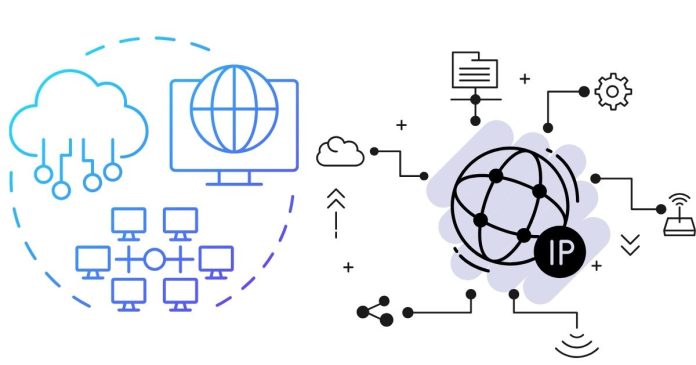The Address Resolution Protocol (ARP) is a fundamental component of computer networking that operates at the network layer of the OSI model. ARP plays a critical role in enabling communication between devices in a local area network (LAN) by mapping an IP address (logical address) to its corresponding MAC address (physical address). This ensures that data packets can be correctly delivered to their intended recipient within the same network.
This article explores ARP, its working mechanism, and its various types.
What is ARP?
ARP is a network protocol used to discover the hardware address (MAC address) of a host given its IP address. It operates at the boundary of the network layer (Layer 3) and data link layer (Layer 2) in the OSI model. ARP is essential for communication in Ethernet networks, as data packets need to be encapsulated with the MAC address of the destination device before being sent.
How ARP Works
The ARP process involves the following steps:
- Request: When a device wants to communicate with another device within the same network, it broadcasts an ARP request packet containing the target IP address.
- Response: The device with the matching IP address responds with an ARP reply packet, which contains its MAC address.
- Caching: The sender stores the MAC address in its ARP cache for future communication, reducing the need for repeated ARP requests.
Example:
- Device A (192.168.1.2) wants to send data to Device B (192.168.1.3).
- Device A broadcasts an ARP request asking, “Who has 192.168.1.3? Tell 192.168.1.2.”
- Device B replies with its MAC address.
- Device A uses the MAC address of Device B to send the data.
Types of ARP
- Proxy ARP
- Definition: In proxy ARP, a device (usually a router) responds to ARP requests on behalf of another device that resides in a different network.
- Use Case: Enables communication between devices in different networks without requiring them to be aware of routing.
- Example: A router acting as an intermediary for two devices on separate subnets.
- Gratuitous ARP
- Definition: Gratuitous ARP is an unsolicited ARP message sent by a device to announce or verify its own IP-to-MAC mapping.
- Use Case:
- To detect IP conflicts (duplicate IP addresses).
- To update ARP caches in other devices when a device’s MAC address changes.
- Example: When a device connects to a network, it sends a gratuitous ARP to inform other devices of its presence.
- Reverse ARP (RARP)
- Definition: RARP is used to obtain an IP address when the MAC address is known.
- Use Case: Used by diskless workstations or devices that do not have a pre-configured IP address.
- Example: A device boots up and sends a RARP request to a RARP server to get its IP address.
- Note: RARP has been largely replaced by modern protocols like DHCP.
- Inverse ARP (InARP)
- Definition: InARP is used to find the IP address of a device when its MAC address is known.
- Use Case: Commonly used in Frame Relay and ATM networks to discover Layer 3 addresses.
- Example: A device in a Frame Relay network uses InARP to dynamically learn the IP addresses of its connected peers.
ARP Table (Cache)
The ARP table, or ARP cache, stores the mappings of IP addresses to MAC addresses that have been recently resolved.
- Static Entries: Manually configured and do not expire.
- Dynamic Entries: Added automatically through ARP requests and expire after a certain time.
Security Issues with ARP
Although ARP is critical for network communication, it has some vulnerabilities:
- ARP Spoofing:
- Malicious actors send fake ARP replies to associate their MAC address with the IP address of a legitimate device, intercepting or altering data.
- Mitigation: Use Dynamic ARP Inspection (DAI) and static ARP entries.
- Man-in-the-Middle (MITM) Attacks:
- Attackers use ARP spoofing to position themselves between two communicating devices.
- ARP Cache Poisoning:
- Attackers manipulate the ARP cache to redirect traffic to their device.
Address Resolution Protocol (ARP) is a vital part of computer networking, enabling communication between devices in a LAN by resolving IP addresses into MAC addresses. Understanding its working mechanism, types, and associated security risks is essential for network engineers and administrators. While ARP has some vulnerabilities, techniques like ARP cache management and security features in modern networking equipment can mitigate potential risks.
By mastering ARP and its variants, professionals can design and secure efficient networks for both small-scale and large-scale environments.


